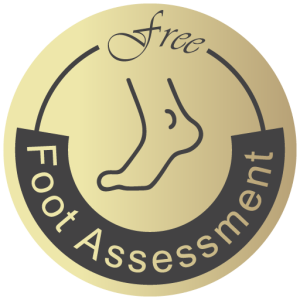



If you’ve been struggling with heel pain or discomfort, whether from standing for long hours, walking, or conditions like plantar fasciitis, you’re not alone. One of the most effective solutions for providing relief is the Silicone Heel Cup . These innovative products are designed to cushion the heel, alleviate pressure, and reduce pain, making them an essential addition to your foot care routine.
In this article, we will explore how to use silicone heel pads, the uses of silicone heel cups, and why they are one of the best ways to address heel pain and improve overall foot health.
A silicone heel cup is a soft, flexible cushion that is placed inside your shoes to provide extra support and cushioning to the heel area. These gel heel cups are specifically designed to absorb shock and reduce pressure on the heel, making them perfect for people suffering from heel pain, arch issues, or foot fatigue.
The silicone heel cups come in various shapes and sizes to fit different foot types and shoe styles. They are made from medical-grade silicone or gel, which helps in providing superior comfort and support, making them ideal for those who are on their feet for extended periods.
Using a silicone heel cup is straightforward, and it can provide immediate relief once properly inserted into your shoes. Here’s how to use heel cups correctly:
Before using your heel pads, ensure that your feet are clean and dry. You don’t want any dirt or moisture between the heel pad and your foot, as it can cause discomfort and prevent the silicone heel cup from sticking properly. Also, make sure that your shoes are clean and free from debris.
Carefully place the silicone heel cup inside the heel area of your shoe. Ensure that the cup fits snugly and aligns with the natural shape of your foot. The heel cup should be positioned in a way that it cushions the heel without affecting the fit of your shoe.
Once the heel cup is in place, wear your shoes as usual. If you feel any discomfort or if the gel heel cups shift, adjust them slightly until you find the most comfortable position. Over time, the silicone heel pads will mold to the shape of your foot, providing optimal comfort and support.
For maximum benefit, use the silicone heel cups regularly. Whether you’re walking, standing, or engaging in physical activities, wearing the heel pads during these activities can help prevent pain, provide cushioning, and promote healing of the affected areas. For individuals suffering from plantar fasciitis or heel spurs, consistent use can significantly reduce discomfort.
Learn more about A calcaneal spur.
Silicone Heel Cup are incredibly versatile and offer numerous benefits, including:
The most common use of silicone heel cups is to provide relief from heel pain caused by conditions like plantar fasciitis, heel spurs, or general foot fatigue. The cushioning effect of the silicone absorbs the shock and pressure that is usually exerted on the heel when walking or standing.
By redistributing the pressure across the foot and reducing friction, silicone heel pads can help prevent the formation of painful calluses. If you’re prone to developing calluses on your heels due to improper footwear or excessive pressure, using heel cups can help mitigate this problem.
For people who engage in activities that involve repetitive foot strikes, such as running or walking, silicone heel cups offer excellent shock absorption. The silicone material helps absorb the impact on the heel, reducing strain on the foot, joints, and spine.
If you spend long hours on your feet, wearing shoes that don’t provide enough cushioning or support, silicone heel cups can make a significant difference. They provide added comfort and relief, ensuring you stay comfortable and pain-free throughout the day.
There are numerous silicone heel cup benefits that make them a must-have for anyone experiencing heel pain or looking for extra comfort in their shoes:
The primary benefit of Silicon Heel Cup is their ability to relieve pain in the heel area. By providing support and cushioning, these gel heel cups can significantly reduce the discomfort caused by heel spurs, plantar fasciitis, and other heel conditions. They help reduce inflammation and promote healing by taking pressure off sensitive areas.
Silicone heel cups are designed for comfort. The soft, flexible silicone material contours to the shape of your foot, providing a custom fit. This level of comfort makes them suitable for everyday use, whether you’re running errands, working, or exercising.
Unlike foam or fabric heel cushions, Silicone Heel Cup are durable and long-lasting. They don’t lose their shape or effectiveness over time, even with regular use. This makes them a cost-effective solution for long-term foot health.
Silicone heel pads are easy to clean. Simply wipe them with a damp cloth after each use, and they’re ready to go. This ease of maintenance ensures that your silicone heel cup remains hygienic and effective.
Yes! Silicone heel cups are designed to fit most foot types and can provide comfort for people with different foot shapes. Whether you have high arches, flat feet, or normal arches, these heel cups can help provide the necessary support and cushioning. They are especially beneficial for individuals suffering from heel spurs, plantar fasciitis, or foot fatigue.
Learn more about How to use a silicone heel cup for a pain free heel.
To get the most out of your silicone heel cup, proper care is essential. Follow these tips to extend the life of your heel cups:
If you’re tired of dealing with heel pain, discomfort, or foot fatigue, Silicone Heel Cup are the perfect solution. These innovative products offer pain relief, comfort, and support, making them an essential addition to your foot care routine. Whether you suffer from heel spurs, plantar fasciitis, or just need extra cushioning, silicone heel cups can provide immediate and long-lasting relief.
By following the simple steps outlined in this article, you can enjoy all the benefits that come with using heel cups and experience pain-free feet every day. Take care of your feet with Silicone Heel Cup and improve your overall foot health!

